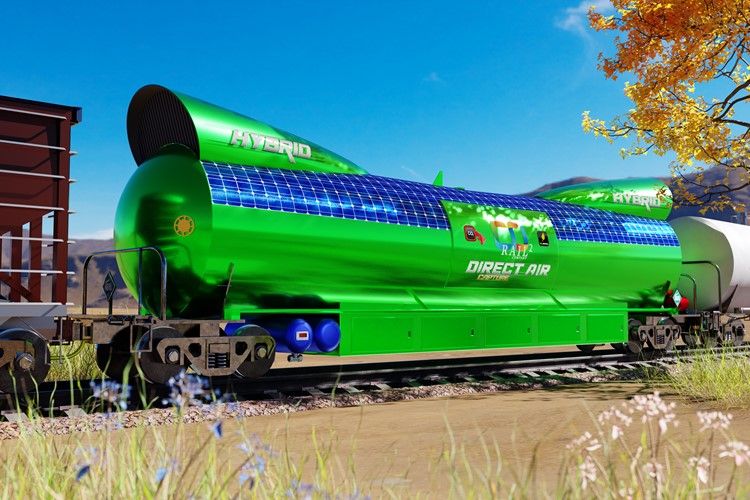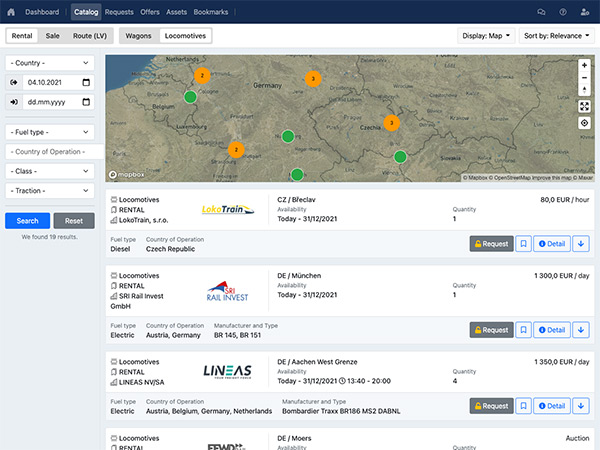Green Deal, Fit for 55, and others are names for programs with one goal: to reduce CO2 in the air. A study published in the science journal Joule now comes up with a solution that brings rail into the game in a slightly different model than "only" electrifying rail.
The US-based startup, CO2Rail Company has been working with a world-renowned team of researchers, including engineers from the University of Sheffield, to design Direct Air Capture (DAC) technology that removes carbon dioxide from the air, which can be used within special rail cars placed with already running trains in regular service.
The DAC rail cars work by using large intakes of air that extend up into the slipstream of the moving train to move ambient air into the large cylindrical CO2 collection chamber and eliminate the need for energy-intensive fan systems that are necessary with stationary DAC operations.
The air then moves through a chemical process that separates the CO2 from the air and the carbon dioxide-free air then travels out of the back or underside of the car and returns to the atmosphere.
After a sufficient amount has been captured, the chamber is closed and the harvested CO2 is collected, concentrated, and stored in a liquid reservoir until it can be emptied from the train at a crew change or fuelling stop into normal CO2 rail tank cars. It is then transported into the circular carbon economy as value-added feedstock for CO2 utilization, or to nearby geological landfill sites.
Co-author of the research, Professor Peter Styring from the University of Sheffield's Department of Chemical and Biological Engineering and Director of the UK Centre for Carbon Dioxide Utilization, said: “Currently the enormous amount of sustainable energy created when a train brake or decelerates is simply lost. This innovative technology will not only use the sustainable energy created by the braking maneuver to harvest significant quantities of CO2, but it will also take advantage of many synergies that integration within the global rail network would provide.
Each of these processes is powered exclusively by onboard generated, sustainable energy sources that require no external energy input or off-duty charging cycles.
When a train pumps the brakes, its energy braking system converts the train’s forward momentum into electrical energy in much the same way as a regenerative electric vehicle. Currently, this energy is dissipated on trains in the form of heat and discharged out of the top of the locomotive during every braking maneuver.

